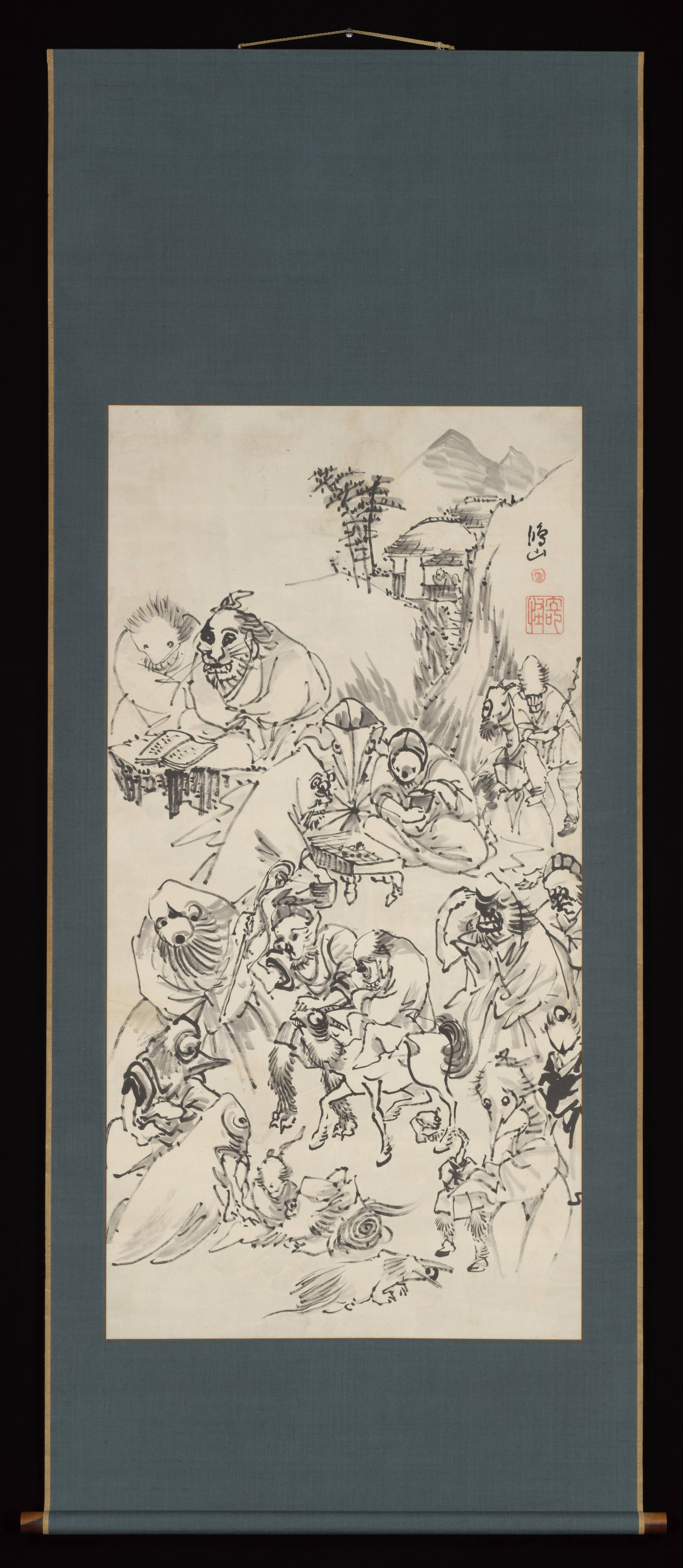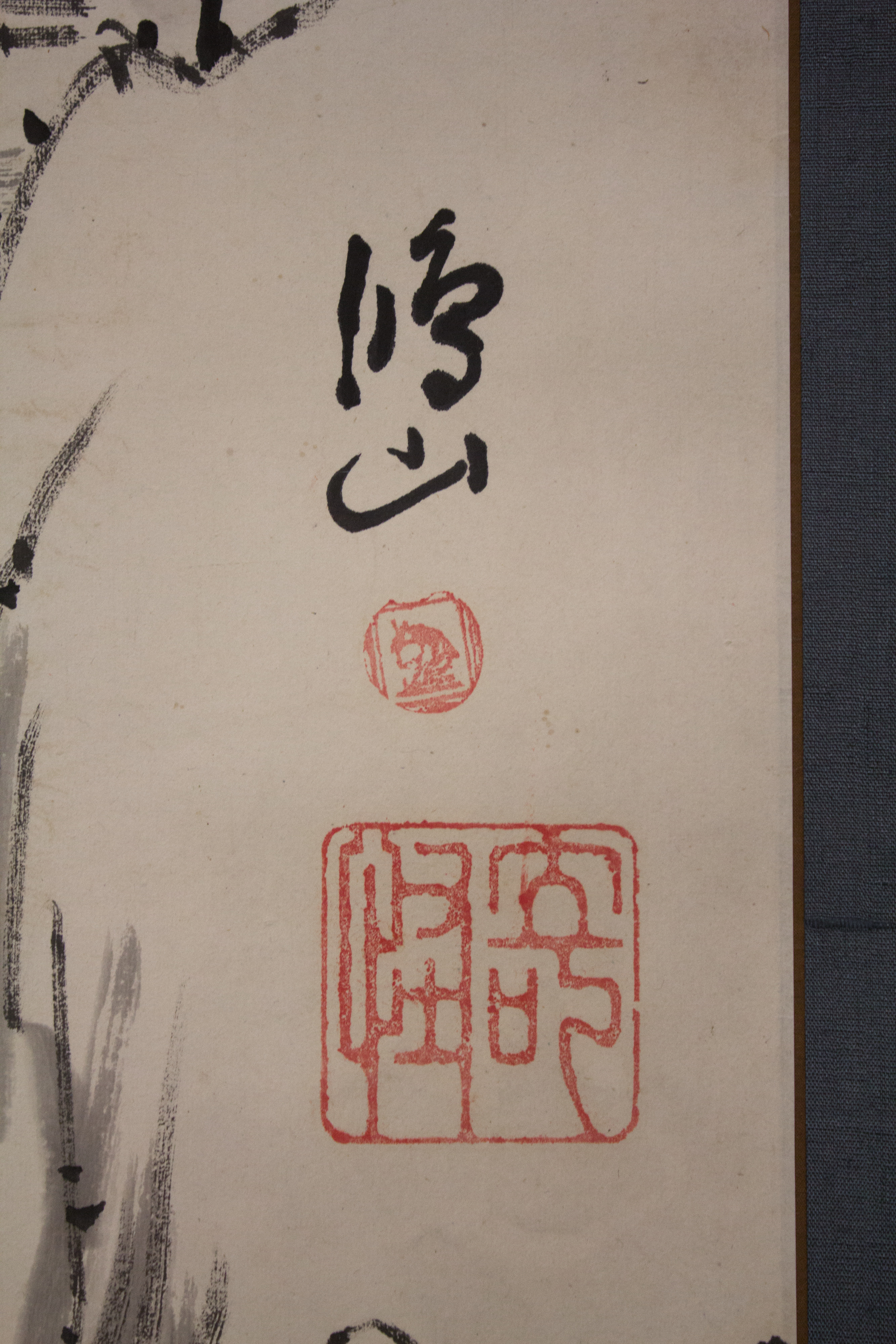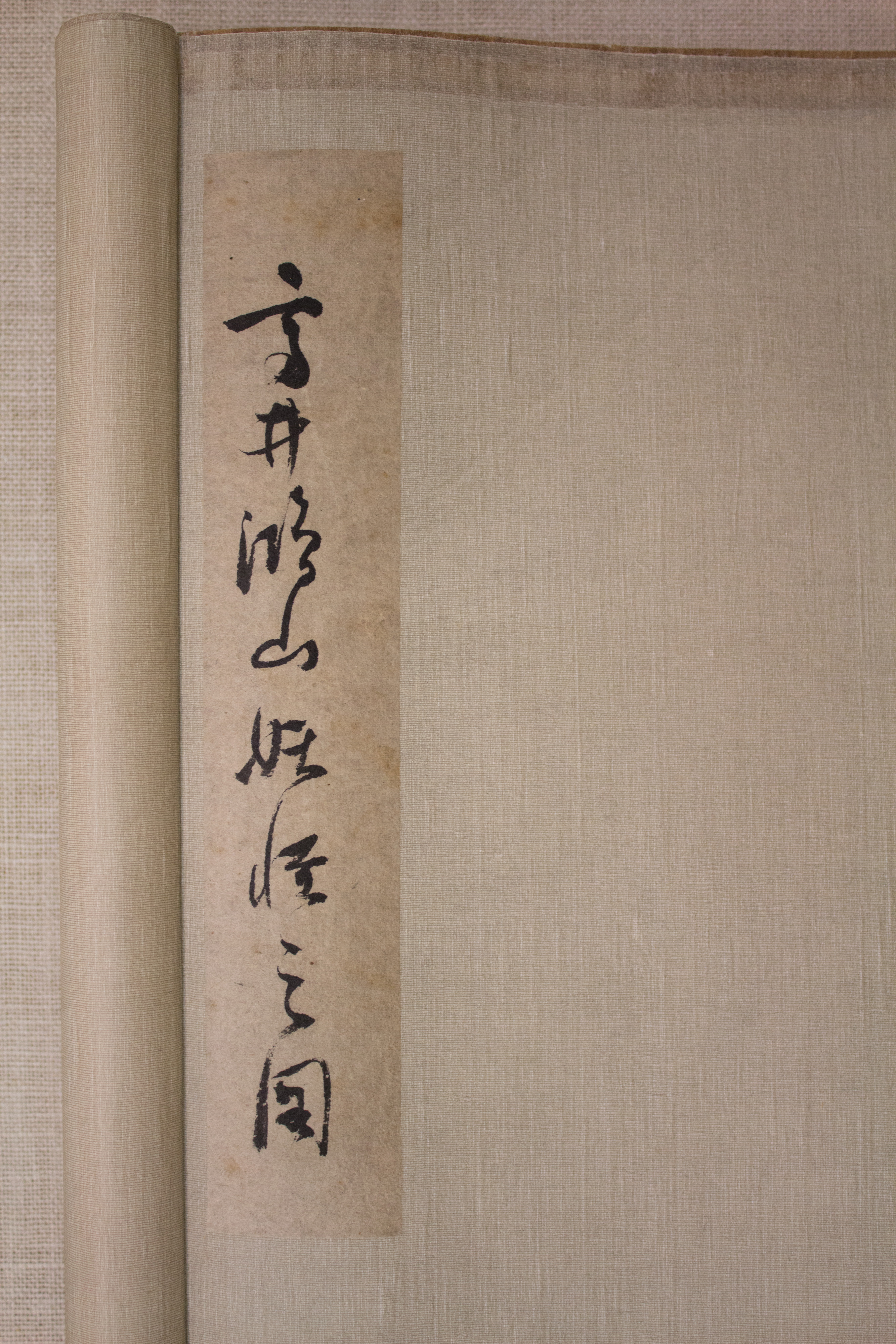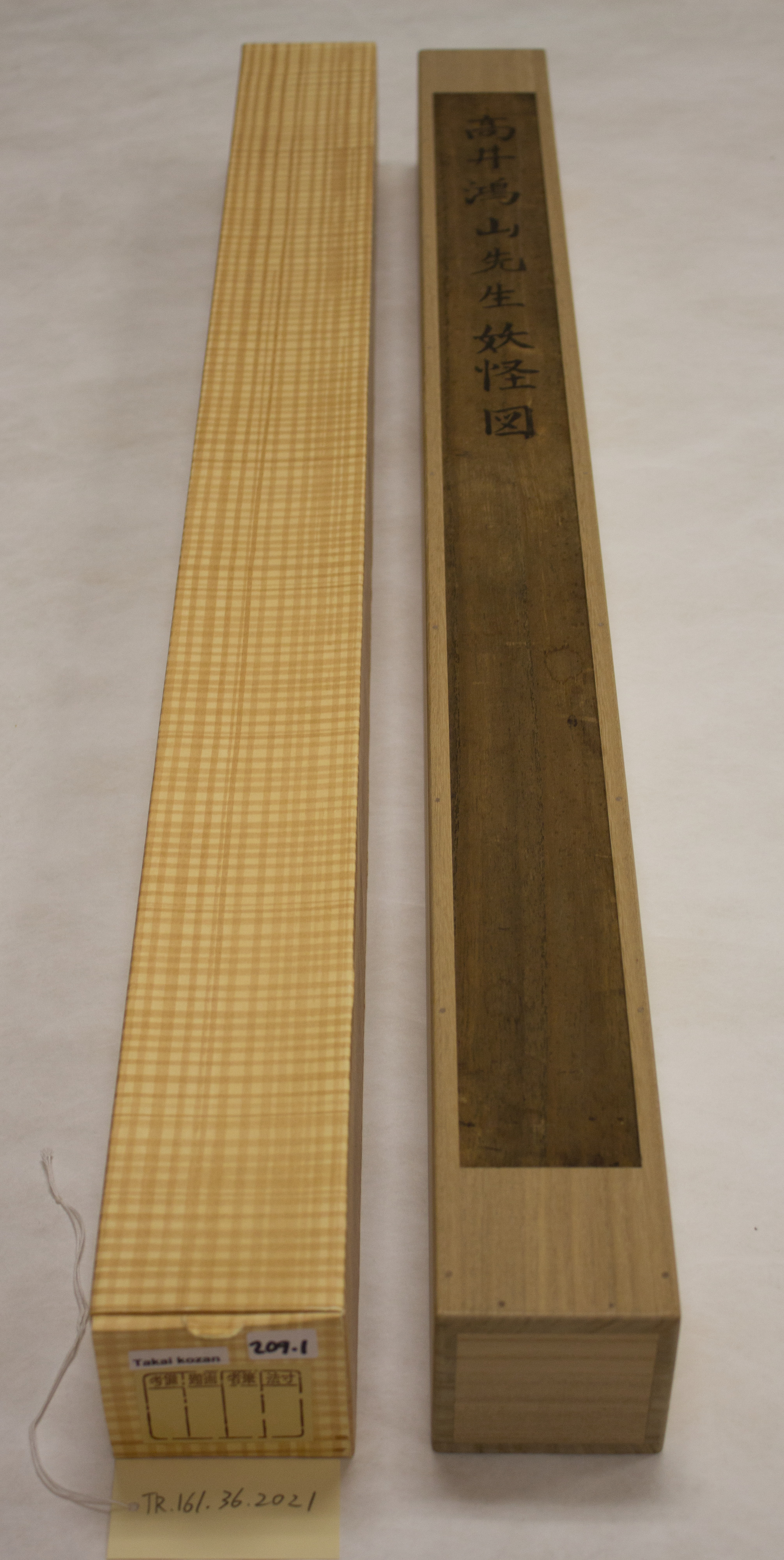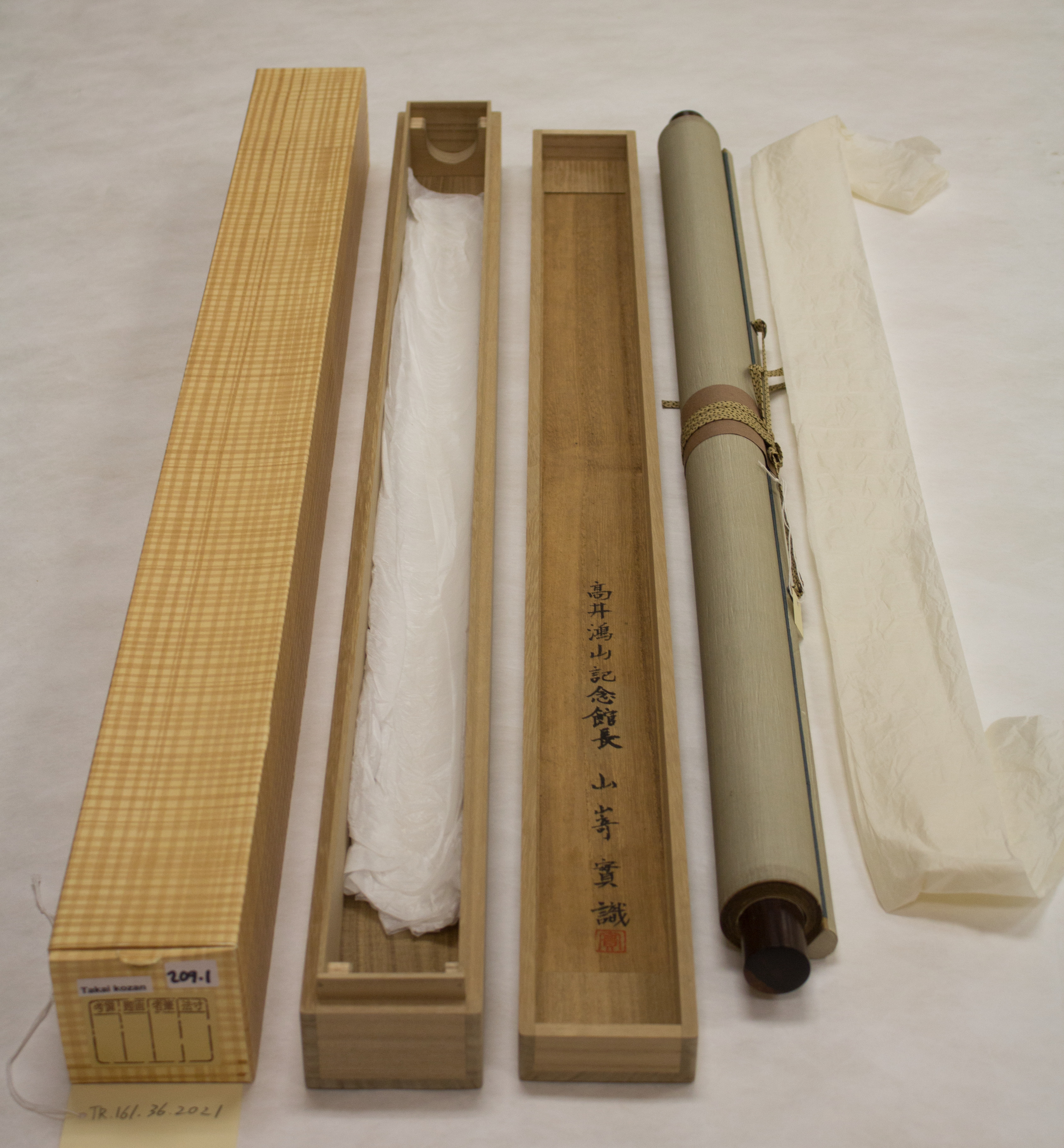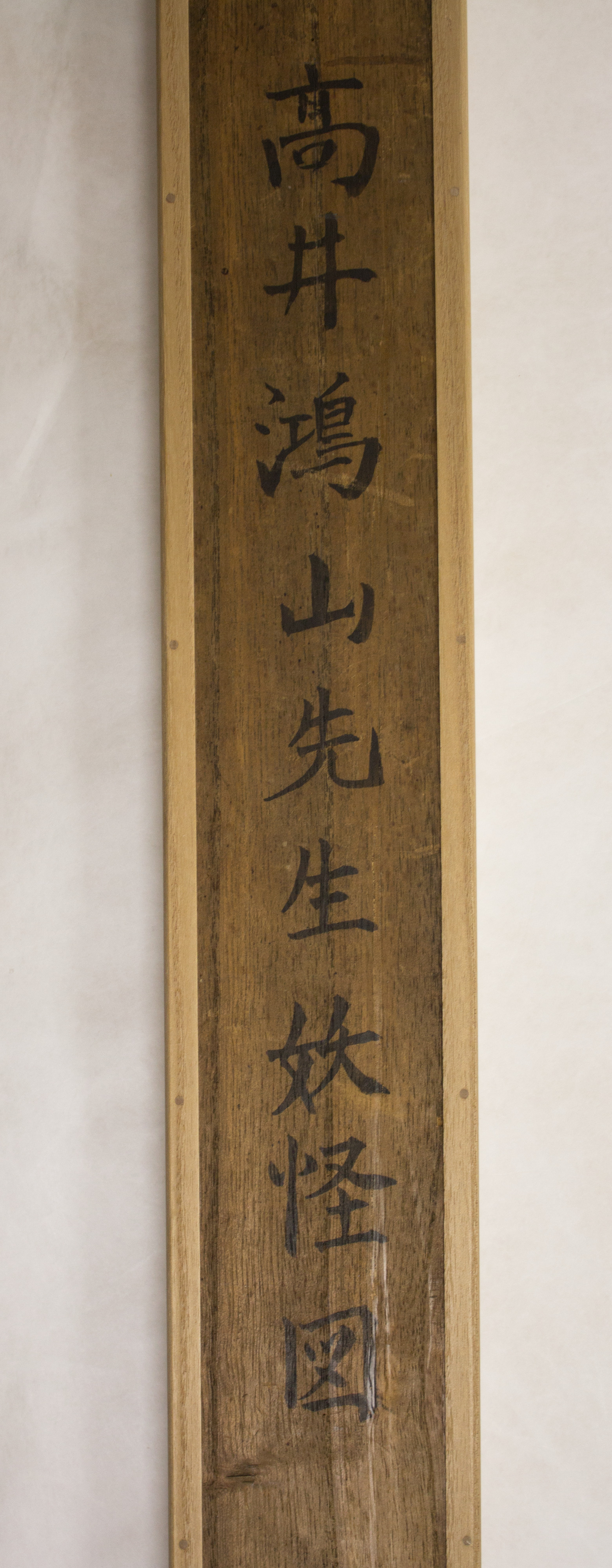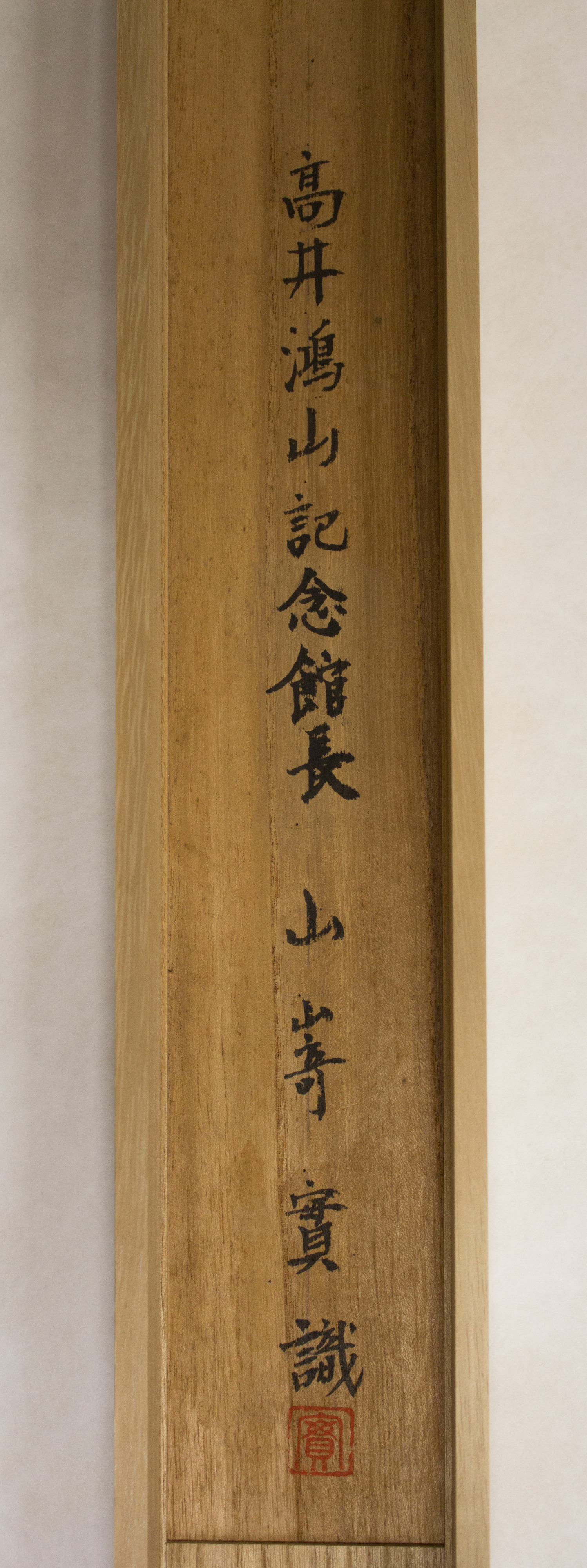Demons and Monsters
Takai Kōzan 高井鴻山 Japanese
Not on view
This bizarre composition, rapidly brushed as if rendered unconsciously, or as if in a trance, captures the appearance of some twenty demons and ghosts in the foreground, with a more conventional scene of a scholar in a hut in the mountains in the background. The artist Takai Kōzan revealed that such paintings he created from the 1870s on, were responding to the hallucinations of demons appearing one after another whenever he closed his eyes to rest or sleep. Though formally trained and skilled in various styles of traditional Japanese painting, from the 1870s on until his death, Kōzan focused almost exclusively on paintings of ghosts and demons, The artist was no doubt subconsciously tapping into the anxiety of the times, when the Shogunate was about to lose power, and the country was opening up to the West, and members of elite society, as Kōzan was, felt threatened that the established societal hierarchies were being challenged.
Born into a conspicuously wealthy sake-brewing and farming family in Obuse, in present-day Nagano Prefecture, Kōzan studied calligraphy, painting, poetry, and neo-Confucian philosophy with leading masters in both Kyoto and Edo. He succeeded to the family business in 1840, but apparently had little aptitude or interest in business management and preferred to devote himself to practicing Zen Buddhism and cultivating a wide network of intellectuals and artistic friends, including most notably the famous painter and print designer Katsushika Hokusai. He became a student of Hokusai, and hundreds of drawings the master created as study models for his pupil still survive. Because of his family’s great wealth and connections, Kōzan eventually was married into the family of the Shogun, which allowed him to further broaden his political and artistic networks. Among his most famous works are meticulous bird-and-flower paintings for the ceilings of festival floats that were collaboratively executed with Hokusai when the master, under the generous patronage of Kōzan, was staying in Obuse, A museum dedicated to preserving his Edo period home and his artistic output remains in Obuse, and a former director of that museum authenticated this work.
This image cannot be enlarged, viewed at full screen, or downloaded.
This artwork is meant to be viewed from right to left. Scroll left to view more.


